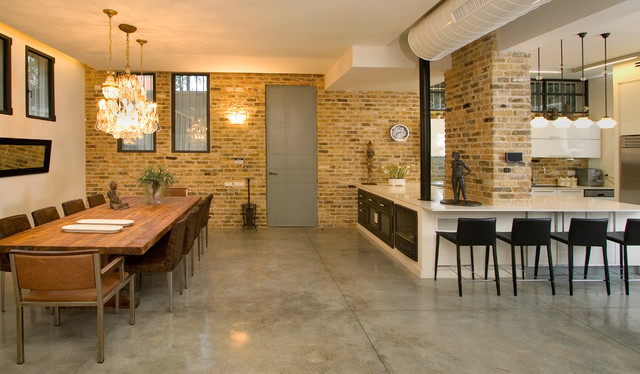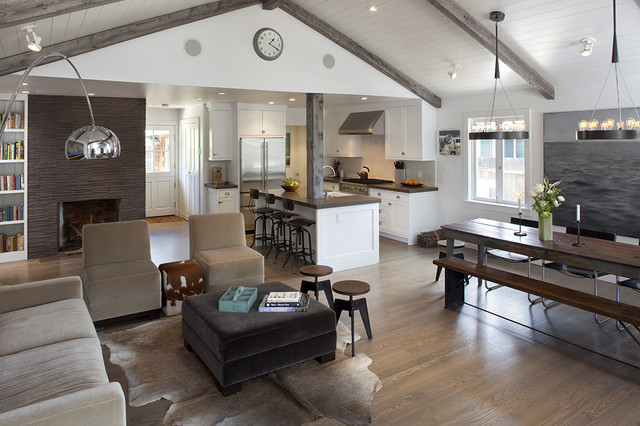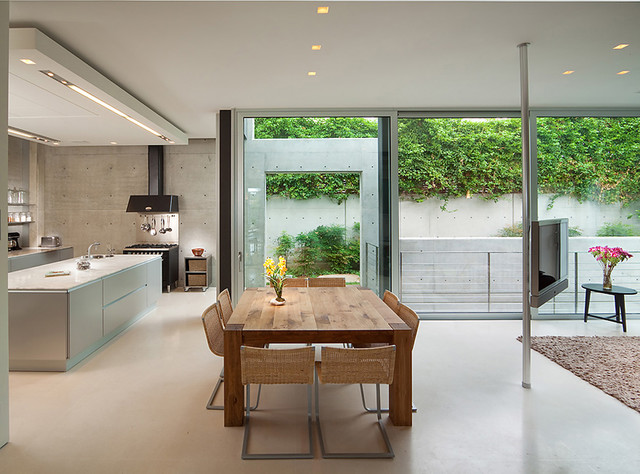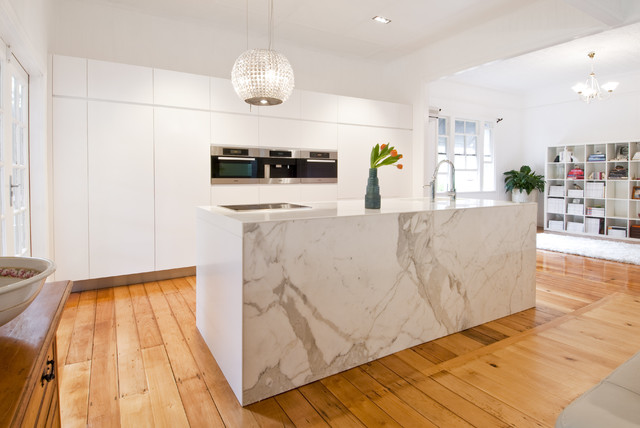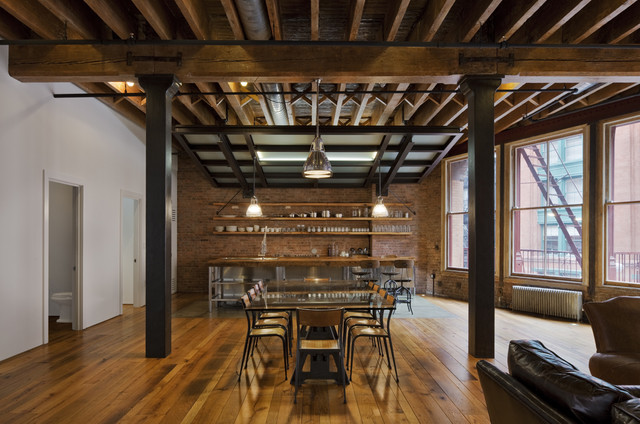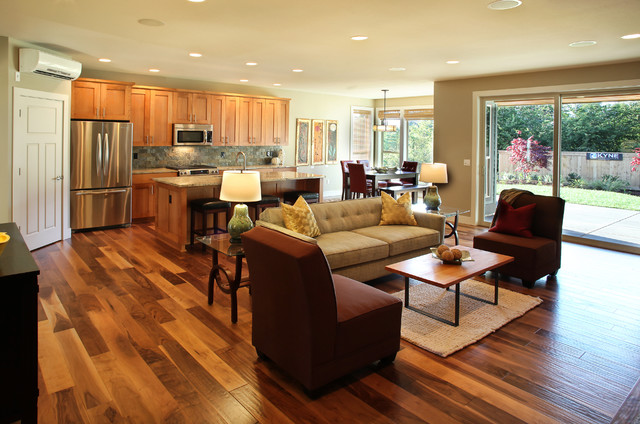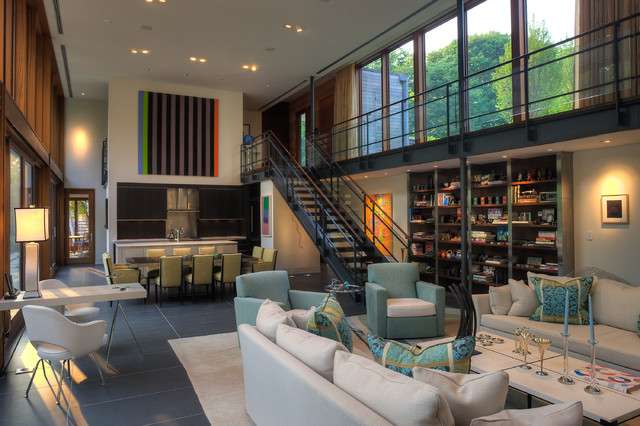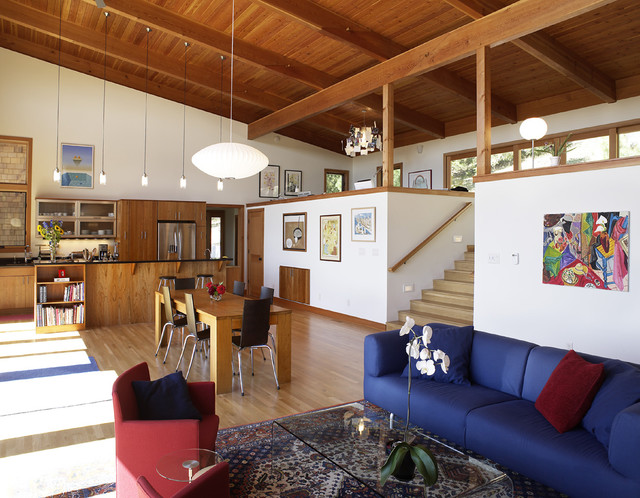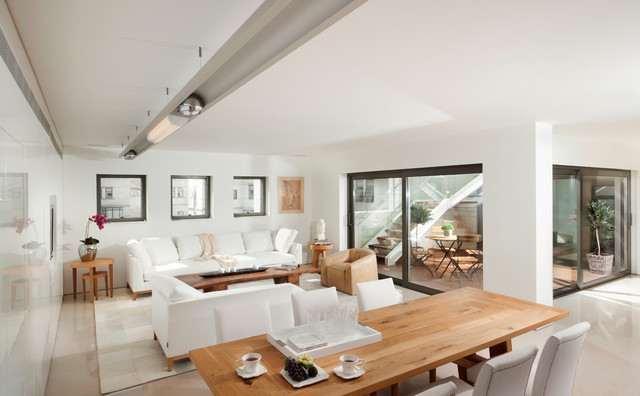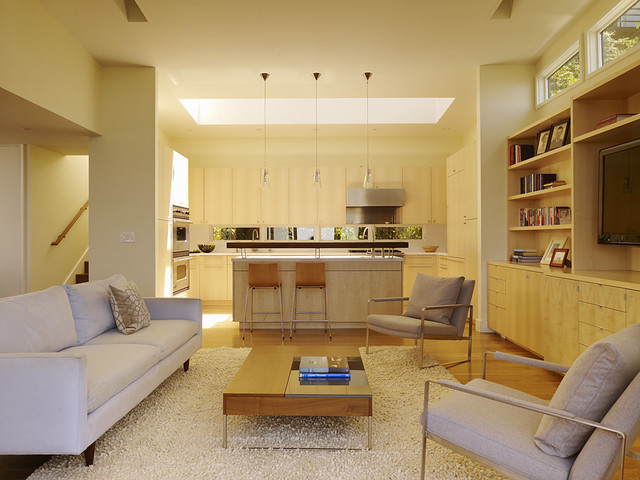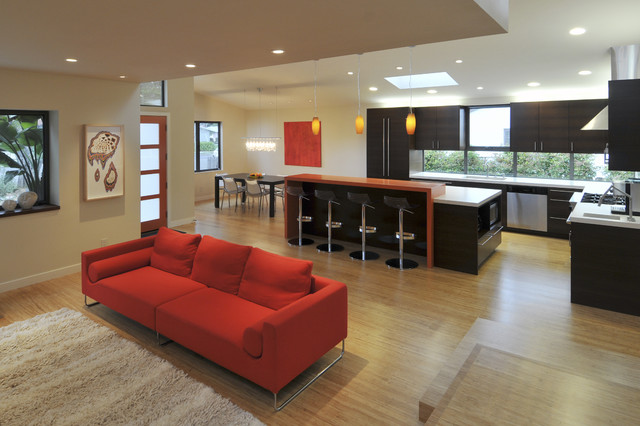Mastering the Open Floor Plan
Browse modern living rooms | Find an interior designer
|
1. What are your space needs? Make a list of the smaller, functional spaces you will need within the larger space, and then assign estimated square footage for each area.
Think about the size of your furniture and the number of people occupying the room. For instance, the space between the kitchen counter and the dining room table should be at least 4 feet so that people can walk between the two and diners have room to pull out chairs. But an entry door in the path and/or a larger scaled space will need more space — 6 feet or more. |
|
2. What are your space relationships? Once you have determined the right size for each space, figure out which spaces need to be near each other — these are called adjacencies.
As people move from one space to the next, which ones make the most sense to be near each other? An obvious adjacency is placing the dining table near the kitchen, but then do you want an area for comfortable seating immediately nearby, a small workspace, or maybe a children's play area? It all depends on your lifestyle. |
|
3. What are the existing conditions? Most remodeling, redecorating or reorganizing projects don't start with a clean slate. Your space plan takes shape within an existing shell. Locations of doors and windows, electrical outlets, columns and partitions will all be major considerations as you think about your space plan.
|
|
4. Where are the plumbing, gas and sewage lines? For kitchens, bathrooms, bars and other rooms that need a water supply and drainage, you will want them as close as possible to existing plumbing and sewage lines to minimize costs. Plan the adjacencies accordingly.
|
|
5. What are your organizing options? Knowing where the kitchen and bathrooms will be, and working within the constraints of the building shell, how do you want the smaller zones within the larger space organized? The four basic options are linear, grid, axial or central. For homes, you would usually use a linear or axial organization. More on that next.
|
|
A linear organization is a series of spaces arranged in a single line. Linear organization is very flexible. The sizes and shapes of the zones within can be different as long as they relate to a straight line.
|
|
Axial arrangements have two or more major points defining the arrangements — like a kitchen on one linear path and a bathroom on another. The path between the two points becomes a major design element.
|
|
6. Don't let paths of travel be an afterthought. Think about how people will move from one zone to the next. Don't forget to think about doorways and stairs as you allow ample room for circulation. You'll need at least 3 feet of room for paths of travel.
|
|
7. Think of furniture in context of grouping. In the bedroom, a bed, nightstand and dresser make up a group. In the living room, a sofa, coffee table, end table, lounge and chair may be a grouping. The groupings are
|
|
Remember the orientation of furniture pieces in relation to each other, and the spacing between pieces to encourage social interaction.
|
|
8. Consider public and private spaces. When thinking about public versus private spaces, think about whether you want some of the spaces enclosed, or partially walled off. Bedrooms are private spaces that should be located in a quieter area of the living space. Kitchens are open and public. How do you like your dining room? In open communication with the kitchen, or more enclosed for a formal feel?
|
|
9. Sketch out some basic ideas. Bubble diagramming is a simple way to start space planning once you have figured out your adjacencies and size requirements. Draw various configurations of bubbles, with different sizes of bubbles representing rooms, zone sizes or furniture groupings. Keep sketching until you come up with an arrangement that works.
|
